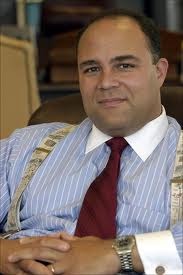America’s Intentional Broadband Duopoly
Written by Dane Jasper
September 2, 2011 | 4 min read
When was the last time someone offered to sell you Broadband over Power Line (BPL)?
BPL was one of the FCC’s five “modes” of competitive access, and the FCC traded this flawed concept of “intermodal” competition for true open market competition.
In 1996, Congress passed The Telecom Act, a major update to the previous 1934 telecommunications law. The updated Act set out to foster true competition in local communication services, and, by extension, broadband. And, it almost worked.
The Act separated services – voice, data, etc – from the physical infrastructure they ran over (copper wires) and allowed competitors uniform access to the cabling to deliver these services. The incumbent sold access to the copper lines, at a profit, to multiple competitors who deployed the equipment connected to the ends. This recognition of the copper lines themselves as a natural monopoly, while services over them were competitive, was the key to the goal of vibrant and open competitive access.
This innovative Act spurred the widespread deployment of DSL services, and a tumultuous period of competitive over-construction and subsequent bankruptcies. These failures don’t condem the concept of competition, but were an over-exuberance of investment ahead of demand. Startup telcos also suffered during the dot-com crash in 2001; as funding dried up, large cash consumption rates caught up with reserves for many of these companies.
In the late 1990’s, most other developed nations followed the U.S. example in separating structure from services. They have stayed the course, and in Europe and Asia today competitive access has driven up broadband speeds, at lower costs.
But, in global broadband rankings, the U.S. isn’t even in the top ten! This is because despite Congress’s expressed intention of creating competition with The Act, the FCC decided that five competitors was enough. And, three of them were non-starters.
With the appointment of FCC Chairman Michael Powell, and lobbying by incumbents, a new theory was born: Intermodal competition was better than true open competition. The modes: Cable, Telco, Power Line, Satellite and Wireless. Each, an effective state-created monopoly. This was done under the banner of the free market, a topsy-turvy way to look at the elimination of actual competition.
With the shift away from the 1996 Act’s open competition model toward this constrained intermodal goal, the FCC began to make a series of decisions to clear the decks of meaningful competition, freeing Cable to spar with Telco, with Broadband over Power Line and Wireless. Satellite would bring up the rear for those unlucky enough to live in a region not worth investing in by the designated modal monopoly.
To create these modal monopolies, the FCC began to foreclose meaningful competition. First, they set aside access to available idle incumbent fiber optic lines for competitors, meaning the the suburbs, which are served by fiber-fed digital loop carriers and remote terminals, were out of reach. In their Triennial Review Remand Order of 2004, the FCC wrote:
In our Triennial Review Order, we recognized the marketplace realities of robust broadband competition and increasing competition from intermodal sources, and thus eliminated most unbundling requirements for broadband architectures serving the mass market
Robust broadband competition? Really?
Then, in the Brand X decision, they ruled that Cable would not be required to allow competitors to lease their lines either. The FCC did this by reclassifying broadband Internet access as an “information service”, rather than a “telecommunications service”. As a result, common carriage rules could be set aside, allowing for an incumbent Cable monopoly. This decision was challenged all the way to the supreme court, who ruled in 2005 that the FCC had the jurisdiction to make this decision.
To close out Powell’s near-complete dismantling of competitive services in the U.S., the FCC took up the issue of ISPs resale of DSL using the incumbent’s equipment, also known as wholesale “bitstream” access. If Cable is an information service under Brand X, why shouldn’t Telco have the same “regulatory relief”? The result: the FCC granted forbearance (in other words, declined to enforce its rules) from the common carriage requirements for telco DSL services.
As for robust intermodal competition, the fact is that BPL hasn’t worked. And Wireless is slow and expensive. And of course satellite, with its round-trip to outer space and back really isn’t a contender.
So, much of the U.S. has ended up with exactly what the FCC intended: intermodal competition, an effective duopoly. The predictable result: the U.S. is no longer a broadband leader.
There are pockets of competitive offerings. Most businesses can choose telephone and Internet service from a competitive company. And, in metropolitan regions, there may also be competitive choices like Sonic.net’s Fusion service, or Covad ADSL2+.
For those in the suburbs, competitive prospects are pretty dim. That was the intention.

